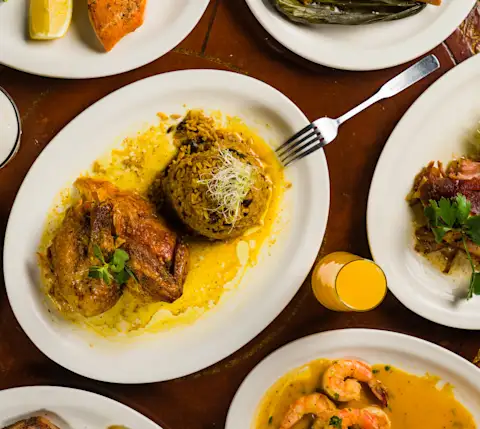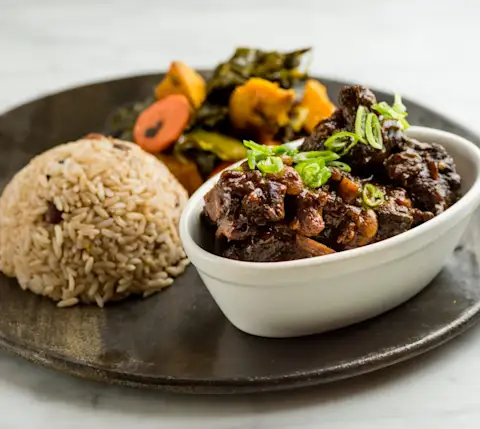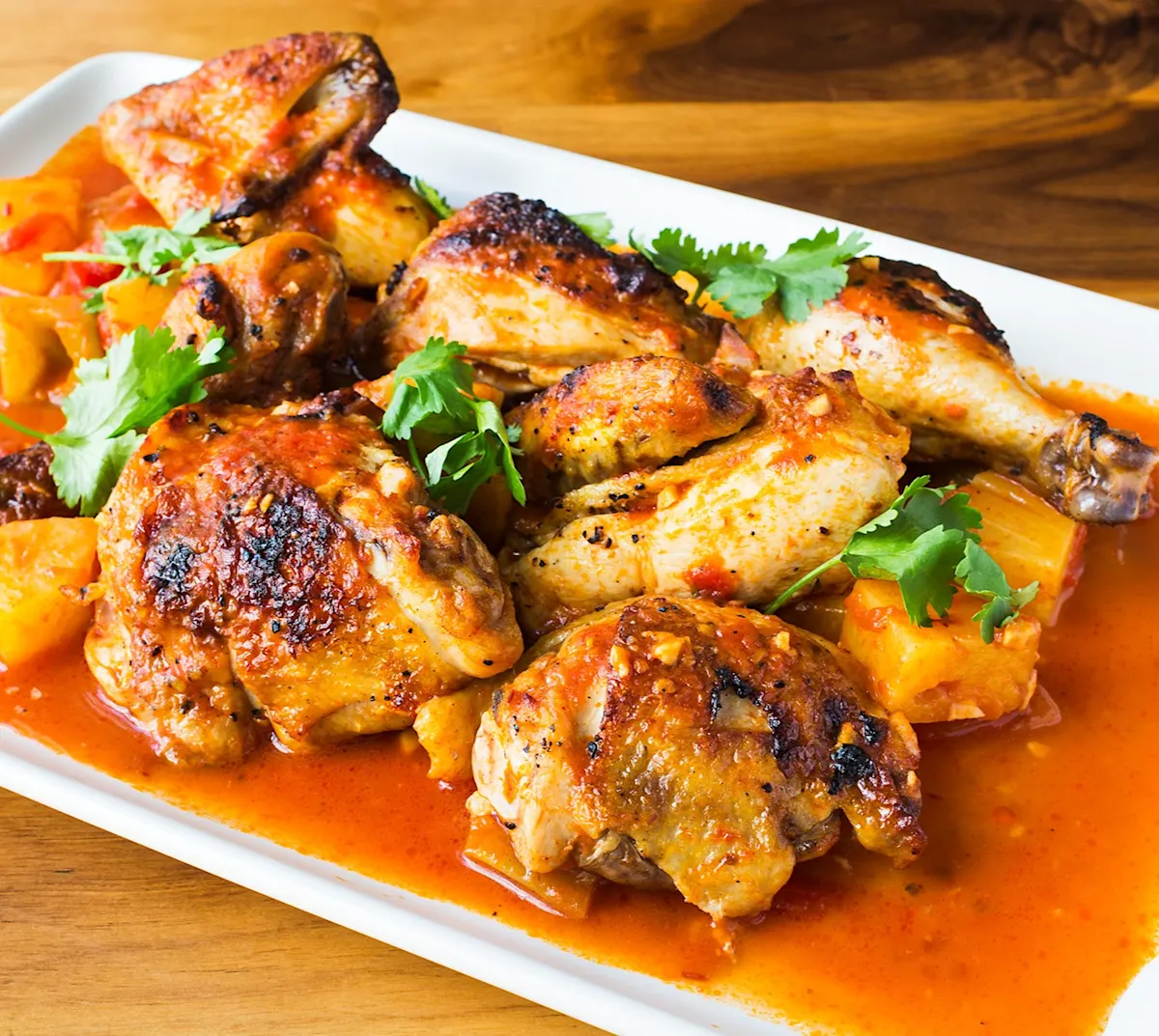Growing up, I spent every Saturday at my father’s house, nestled between my uncles and cousins, with aromas of stews; curries; geera-flavored, pea-filled roti dough; and rice and peas filling the air.
In Trinidad, Jamaica, Guyana, and other English-speaking islands, these standout dishes are typically known as brown stew or curry; in Guadeloupe and Martinique, viande roussi; in the Dominican Republic, Puerto Rico, and Panama, guisado; and, in Haiti, poule en sauce. These rich, hearty, one-pot stews are often paired with roti, buss up, macaroni pie, rice and peas (or peas and rice, depending on which island you’re from), and, always, gravy.
Throughout the Caribbean, Central America, and South America — or back home, as we call it, all cooking starts with freshly rinsed cutlets of meat, ranging from goat to chicken to beef to oxtail, which are then stewed in caramelized sugar or curry and cooked until they are so tender they fall off the bone. Next comes the generous portions of green seasoning, epis, or sofrito, a flavorful mirepoix of pimiento peppers, broadleaf thyme, ginger, garlic, chadon beni, and Scotch bonnet peppers.

These delicious stews are typically cooked in a Dutch oven, allowing them to steep in the seasonings and create flavorful gravies that accompany cook-up rice, roti, boiled provisions, and callaloo as part of the iconic Sunday lunch.
Each dish is a visceral reminder of colonial history, stirring in rich flavors and culinary traditions brought with enslaved people and indentured laborers from Africa and India. Post-emancipation of the Afro-Caribbean slaves in the British West Indies in 1834, there was a need for labor, which brought large populations of indentured laborers, mainly from India and China. Indian laborers brought their culinary traditions, which blended with African flavors, resulting in a rich Creole culture and cuisine with standout dishes like callaloo, cou-cou, and curries. The woven veins of slavery and indentureship, forced migration and resourcefulness, and the resulting fusion of food and culture — this is my family and culinary history.
So when my father gathered my family on weekends over flavorful curries and stews, it created a sense of home. As time passes, traditions like Roti Saturdays at home may have shifted, but the connection to back home remains, especially through food. Sometimes, with the assistance of my mother and aunts, I prepare these delicious stews and curries, but it feels just as tied to home when I find my culinary roots in the streets of Little Caribbean. The network of this community is an important part of what it means to be West Indian, to me, and is an essential part of the Caribpolitan experience in Brooklyn. I love to support local restaurants across the boroughs, to get to know the people as well as the menus. And they deliver!

Now you can get everything — kabrit en sauce from Zanmi braised oxtail from Negril BK goat roti from Suzys Roti Parlour, rabo guisado from Puerto Viejo — all delivered by DoorDash, bringing those special memories and authentic flavors right to your door.
Shelley Worrell, based in Brooklyn’s Little Caribbean, founded I AM CaribBEING and writes about Caribbean food, culture, and lifestyle.






